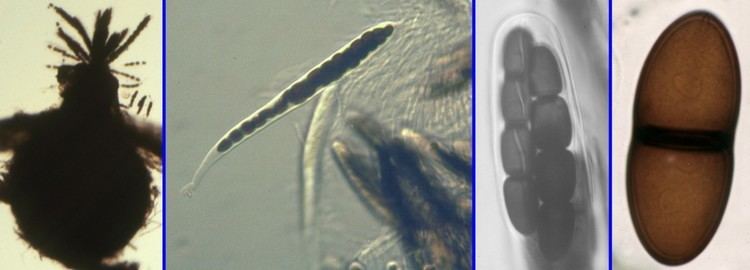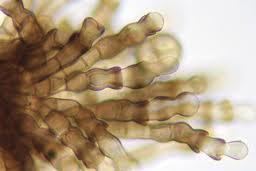Kingdom Fungi Subdivision Pezizomycotina Subclass Pleosporomycetidae | Scientific name Pleosporales Rank Order | |
 | ||
Lower classifications | ||
19 ying zhang an overview of pleosporales
The Pleosporales is the largest order in the fungal class Dothideomycetes. By a 2008 estimate it contains 23 families, 332 genera and more than 4700 species. The majority of species are saprobes on decaying plant material in fresh water, marine, or terrestrial environments, but several species are also associated with living plants as parasites, epiphytes or endophytes. The best studied species cause plant diseases on important agricultural crops e.g. Cochliobolus heterostrophus, causing southern corn leaf blight on maize, Phaeosphaeria nodorum (Stagonospora nodorum) causing glume blotch on wheat and Leptosphaeria maculans causing a stem canker (called blackleg) on cabbage crops (Brassica). Some species of Pleosporales occur on animal dung and a small number occur as lichens and rock-inhabiting fungi.
Contents
- 19 ying zhang an overview of pleosporales
- Taxonomy
- Subdivision
- Phylogenetics
- Genera incertae sedis
- Evolution
- References

Taxonomy

The order was proposed in 1955 as Dothideomycetes with perithecioid ascomata with pseudoparaphyses amongst the asci, at which time there were seven families (Botryosphaeriaceae, Didymosphaeriaceae, Herpotrichiellaceae, Lophiostomataceae, Mesnieraceae, Pleosporaceae and Venturiaceae). Three further families were added in 1973 (Dimeriaceae, Mycoporaceae and Sporormiaceae). The order was only formally described in 1987 (Barr) with 21 families. Five families were added in 2009 (Aigialaceae, Amniculicolaceae, Lentitheciaceae, Tetraplosphaeriaceae and Trematosphaeriaceae). The family Halojulellaceae was circumscribed in 2013.
Subdivision

Barr originally accepted six suborders within which to arrange the families. A suborder, Pleosporineae has been proposed, including four families (Didymellaceae, Leptosphaeriaceae, Phaeosphaeriaceae and Pleosporaceae). Also Massarineae with five families (Lentitheciaceae, Massarinaceae, Montagnulaceae, Morosphaeriaceae and Trematosphaeriaceae).
Phylogenetics

The Pleosporales form a well supported clade, with 17 subclades. As a result of phylogenetic studies, the Pleosporales have undergone considerable reorganisation, particularly with reference to the very large genus Phoma and the family Didymellaceae. Consequently, a number of genera considered incertae have now been placed within the latter family.
Genera incertae sedis
These are genera of the Pleosporales of uncertain taxonomy that have not been placed in any family.
Evolution

The oldest member of Pleosporales is the extinct genus Margaretbarromyces which was described from Eocene age strata on Vancouver Island, British Columbia.


